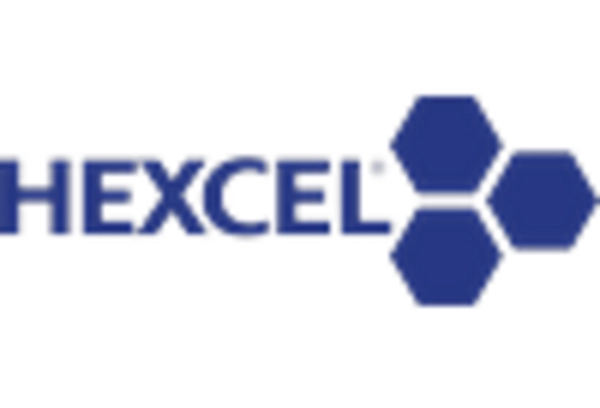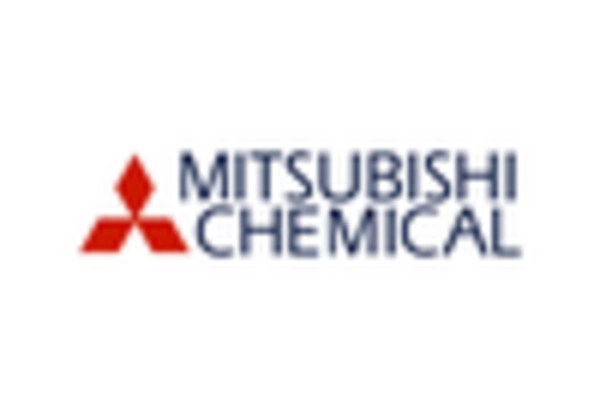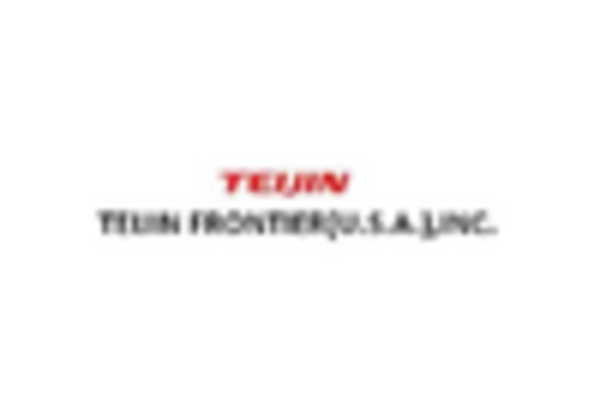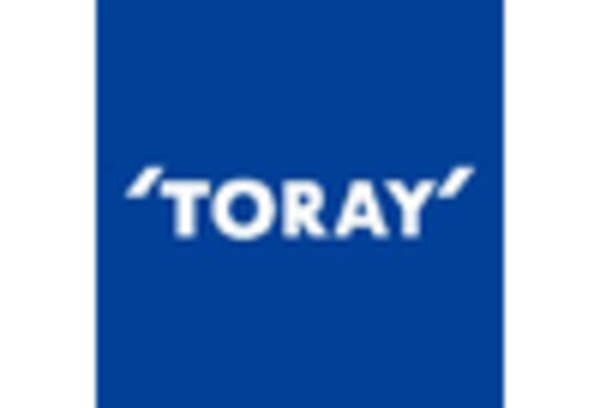Growing Demand in Aerospace Sector
The US Advanced Composites Market is experiencing a notable surge in demand, particularly within the aerospace sector. This growth is largely attributed to the increasing need for lightweight materials that enhance fuel efficiency and reduce emissions. Advanced composites, such as carbon fiber reinforced polymers, are being utilized in aircraft structures, leading to a projected market growth rate of approximately 8% annually through 2026. Major aerospace manufacturers in the US are investing heavily in research and development to integrate these materials into their designs, thereby driving the overall market forward. The emphasis on reducing operational costs and improving performance metrics further solidifies the role of advanced composites in this industry.
Expansion in Automotive Applications
The US Advanced Composites Market is witnessing a significant expansion in automotive applications, driven by the industry's shift towards lightweight materials to improve fuel efficiency and meet stringent emissions regulations. Advanced composites are increasingly being adopted in vehicle manufacturing, particularly in electric and hybrid models, where weight reduction is critical. The market for automotive composites is expected to grow at a compound annual growth rate of around 10% from 2023 to 2026. This trend is further supported by government initiatives aimed at promoting sustainable transportation solutions, which encourage the use of advanced materials in vehicle production. As automakers continue to innovate, the demand for advanced composites is likely to rise, enhancing the overall market landscape.
Increased Investment in Renewable Energy
The US Advanced Composites Market is benefiting from increased investment in renewable energy technologies, particularly in wind energy applications. Advanced composites are essential in the manufacturing of wind turbine blades, where their lightweight and durable properties contribute to improved efficiency and longevity. The US wind energy sector has seen substantial growth, with installed capacity reaching over 100 GW, and this trend is expected to continue. As the demand for clean energy solutions escalates, the reliance on advanced composites in renewable energy infrastructure is likely to expand, thereby bolstering the market. This alignment with national energy policies further underscores the importance of advanced composites in achieving sustainability goals.
Supportive Government Policies and Initiatives
The US Advanced Composites Market is significantly influenced by supportive government policies and initiatives aimed at fostering innovation and competitiveness. Federal programs that promote research and development in advanced materials are crucial in driving the growth of the composites sector. Initiatives such as the Advanced Manufacturing Office and various grants for composite research are designed to enhance the capabilities of US manufacturers. These policies not only encourage investment in advanced composites but also facilitate collaboration between industry and academia, leading to the development of new applications and technologies. As the government continues to prioritize advanced manufacturing, the US advanced composites market is likely to benefit from increased funding and resources, further propelling its growth.
Technological Advancements in Manufacturing Processes
The US Advanced Composites Market is poised for growth due to ongoing technological advancements in manufacturing processes. Innovations such as automated fiber placement and 3D printing are revolutionizing the way advanced composites are produced, leading to enhanced efficiency and reduced production costs. These advancements enable manufacturers to create complex geometries and optimize material usage, which is particularly beneficial in industries like aerospace and automotive. As these technologies mature, they are expected to drive down costs and increase the accessibility of advanced composites, potentially expanding their application across various sectors. This evolution in manufacturing is likely to play a crucial role in shaping the future of the US advanced composites market.
















